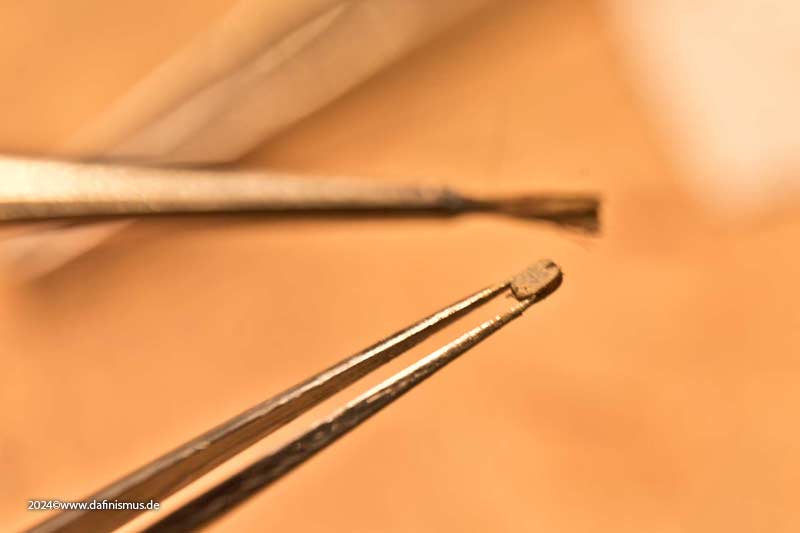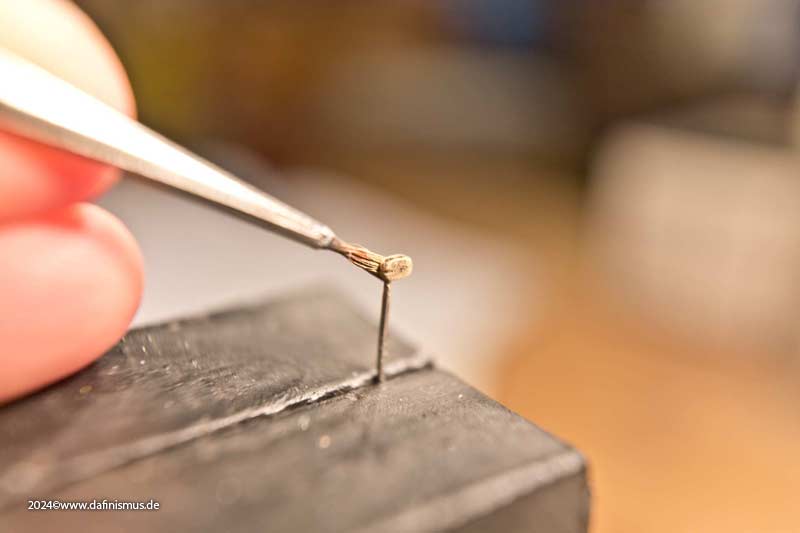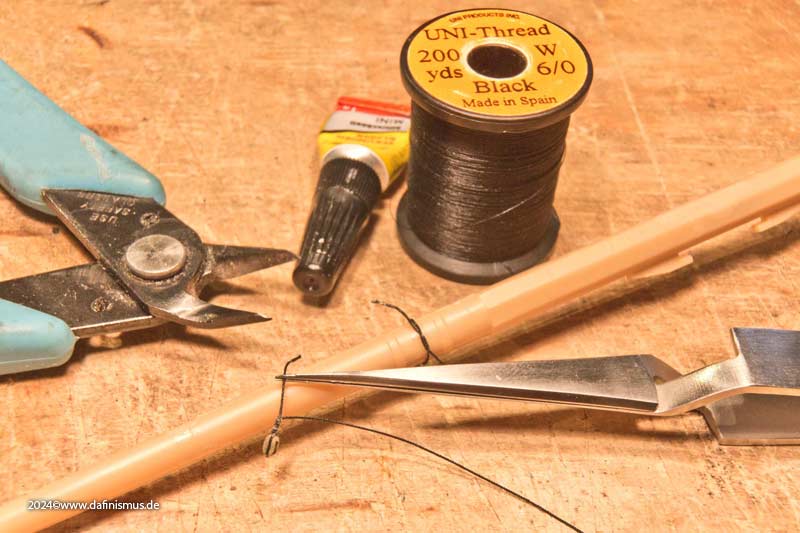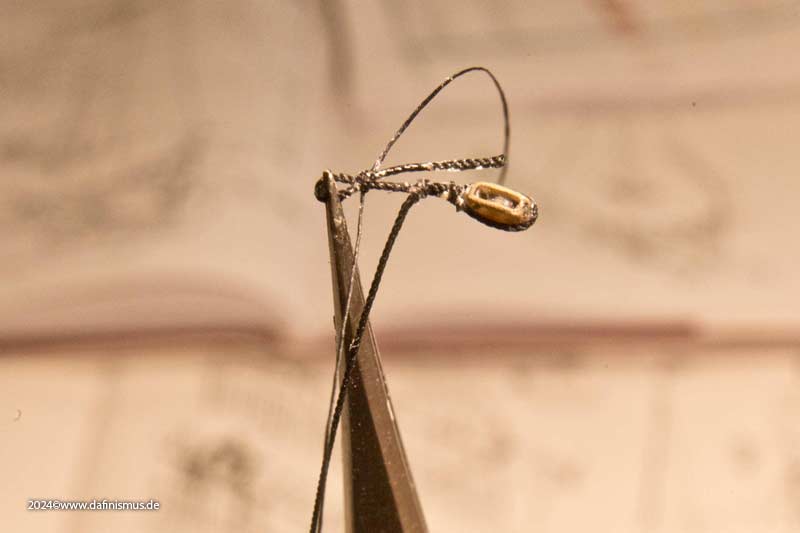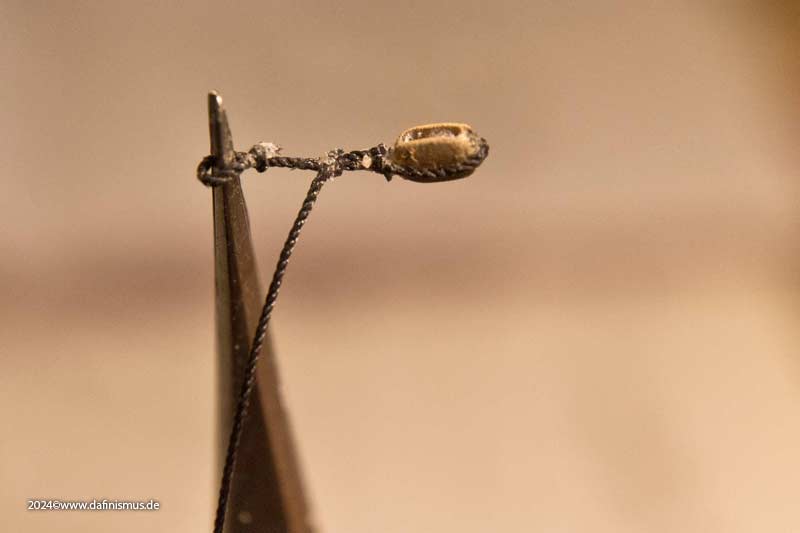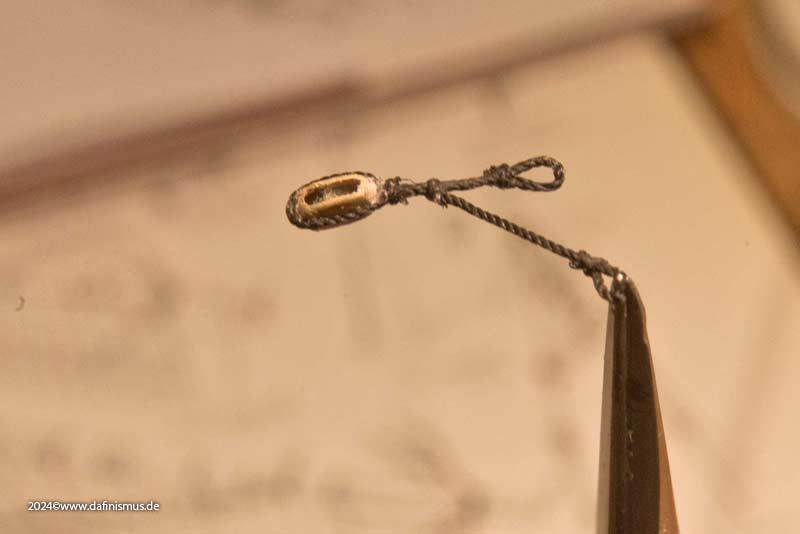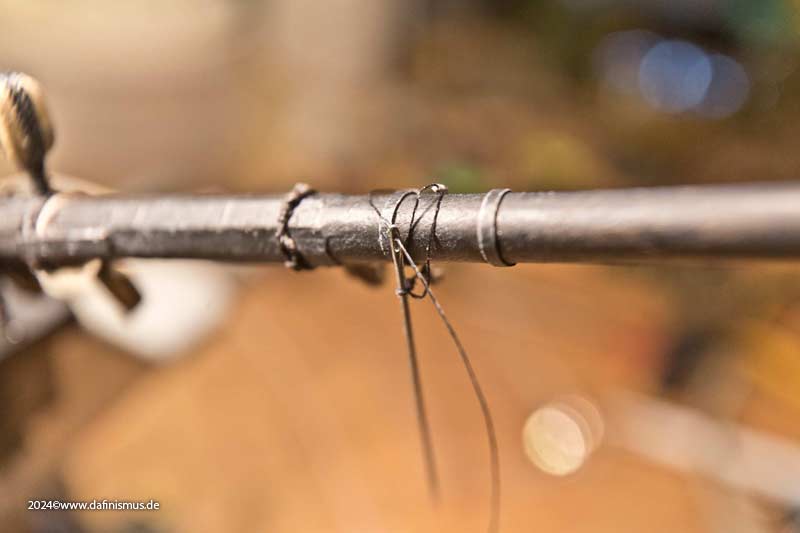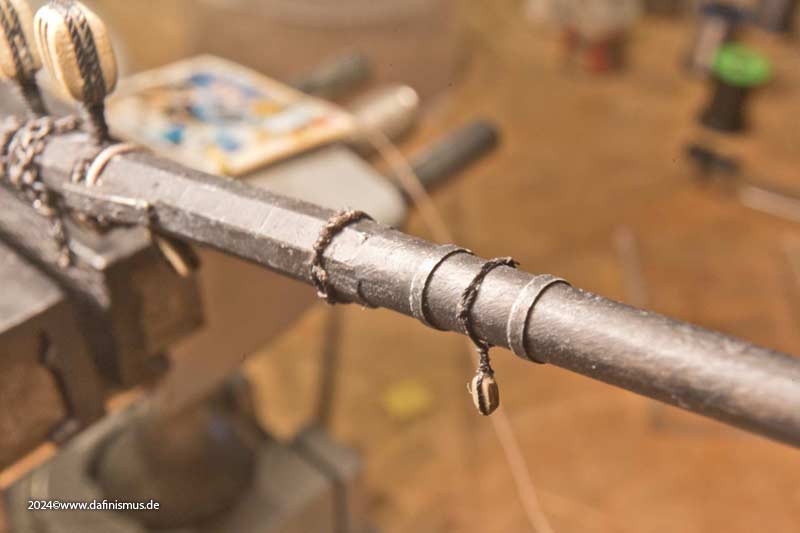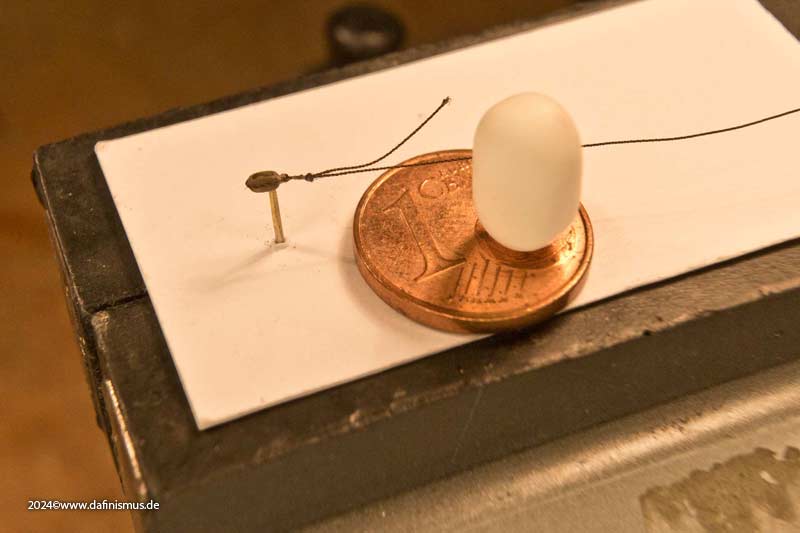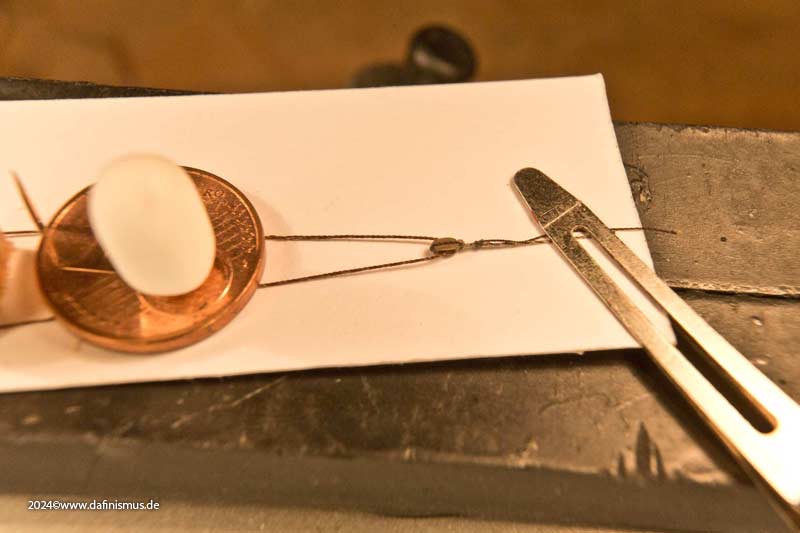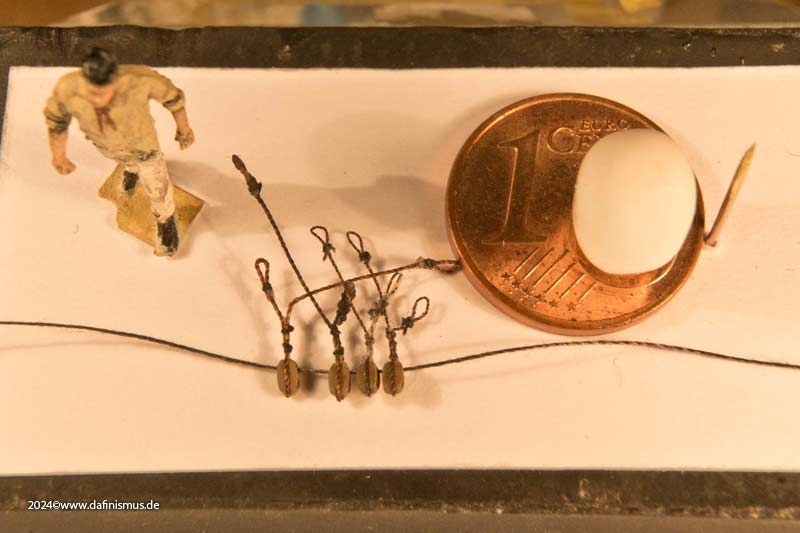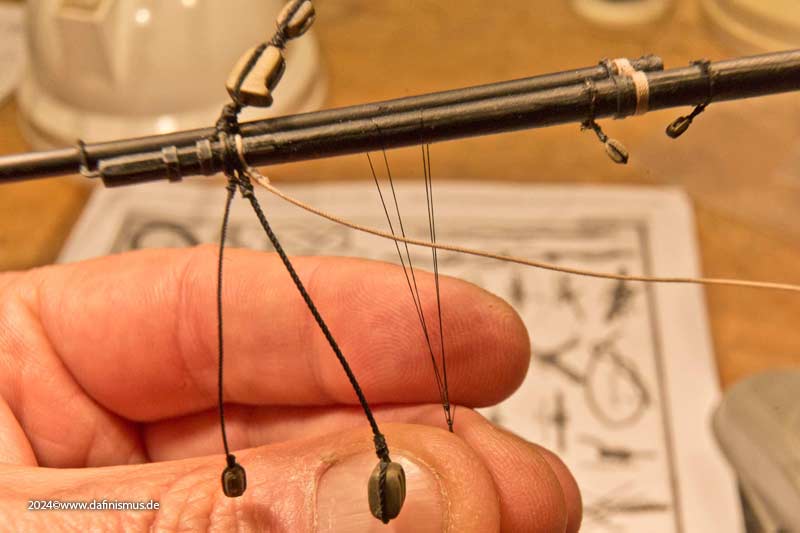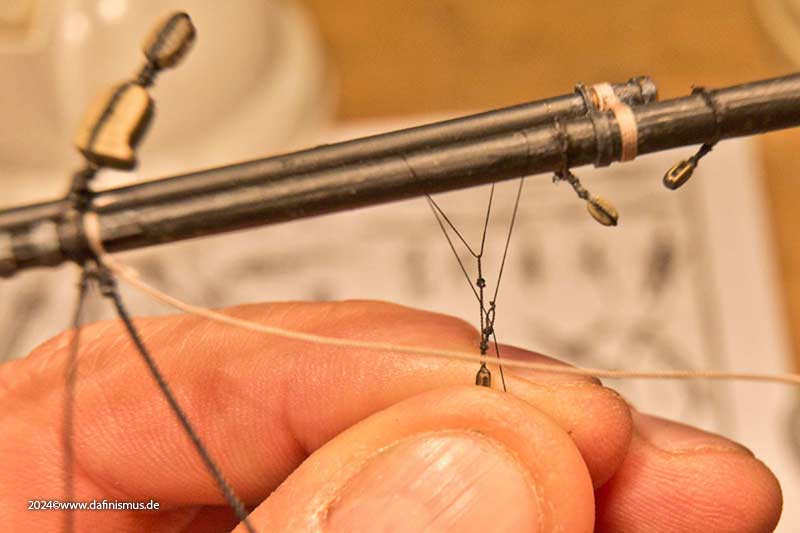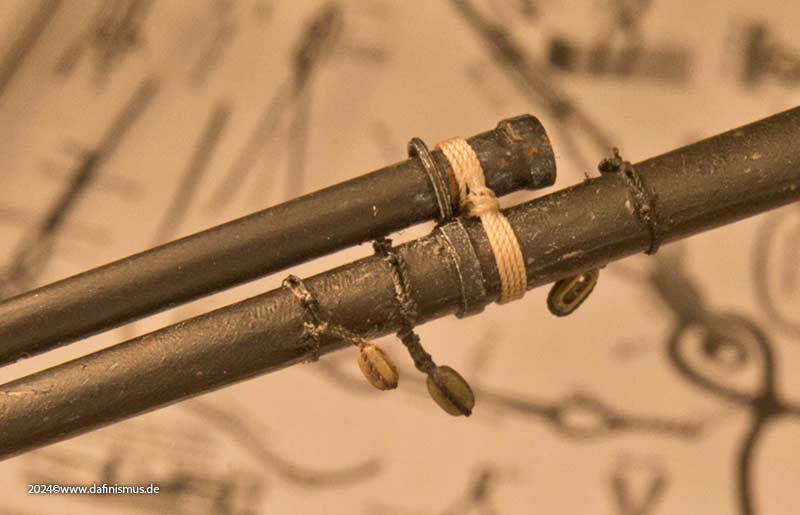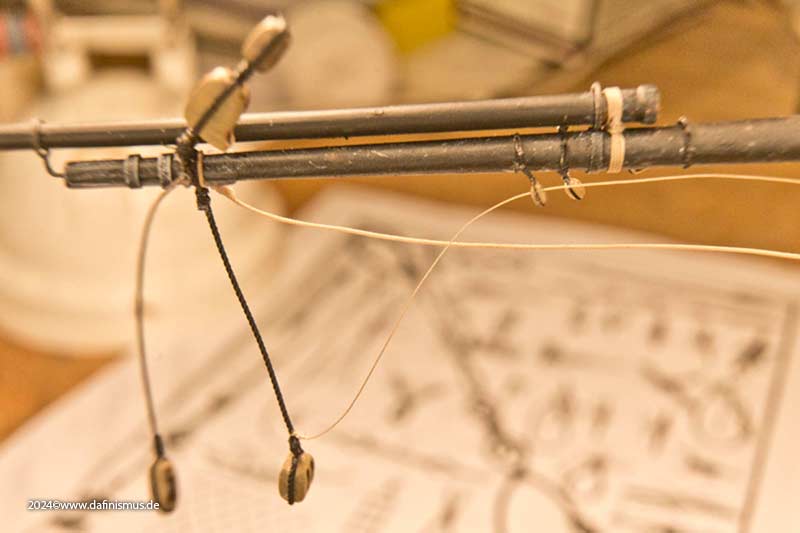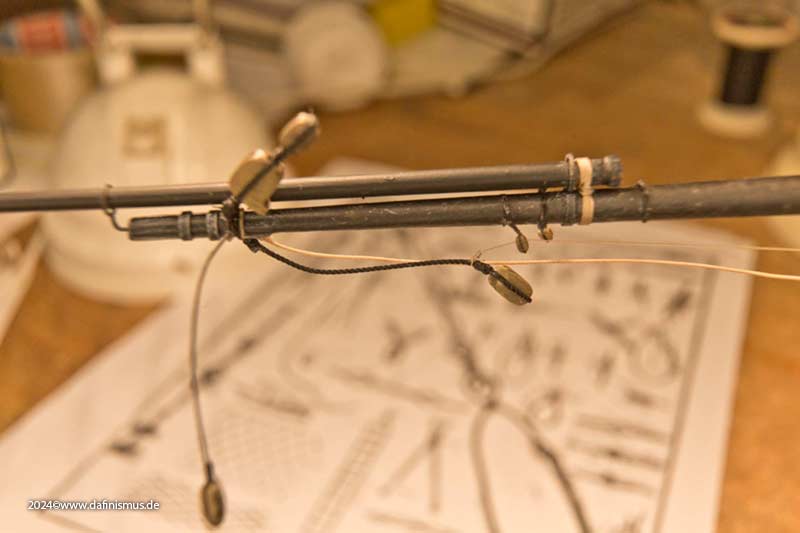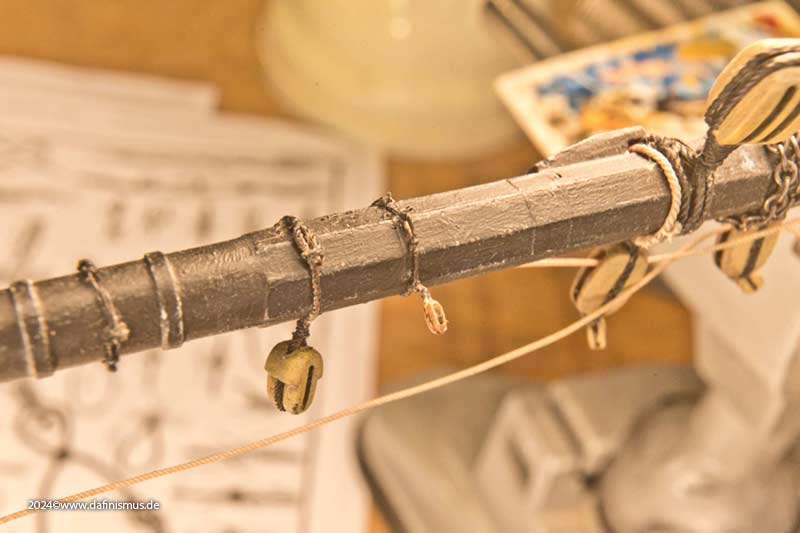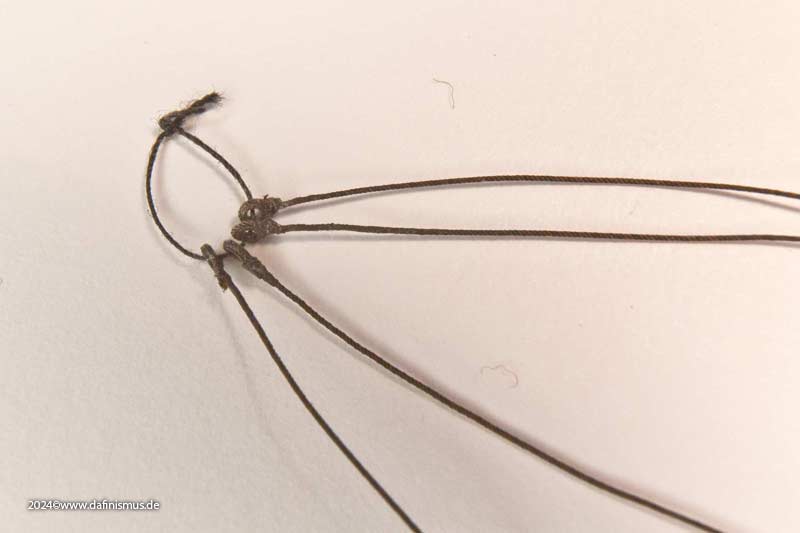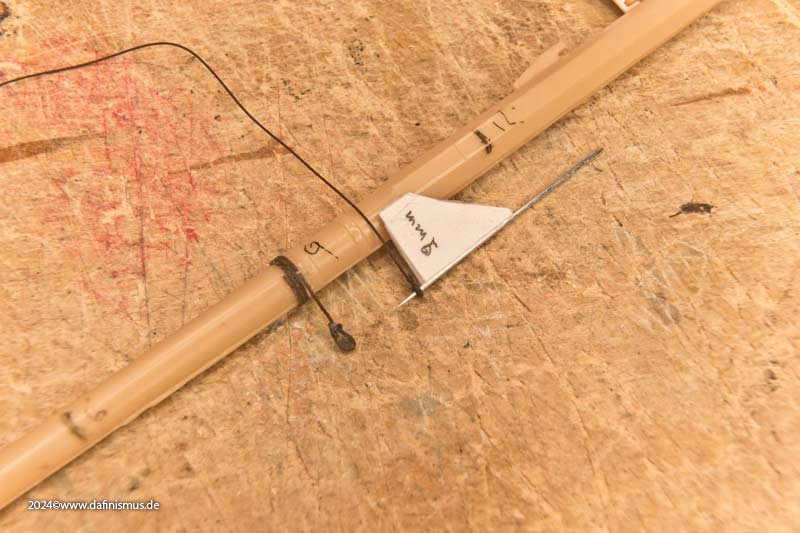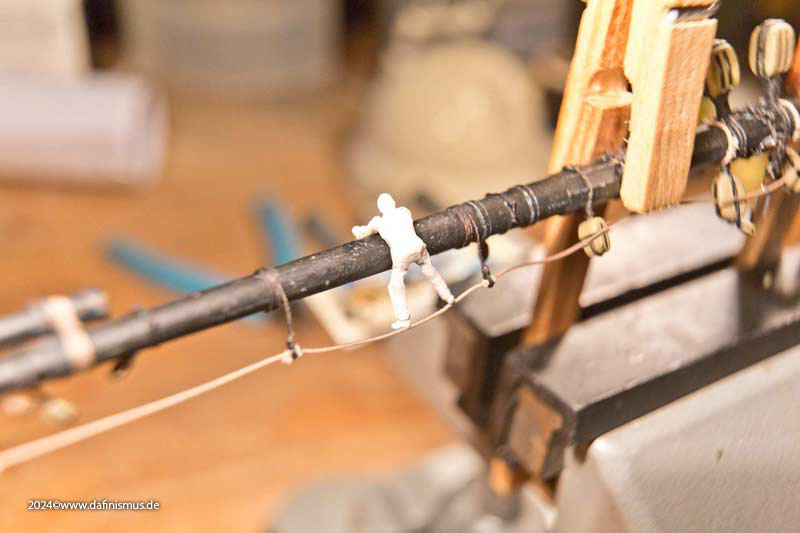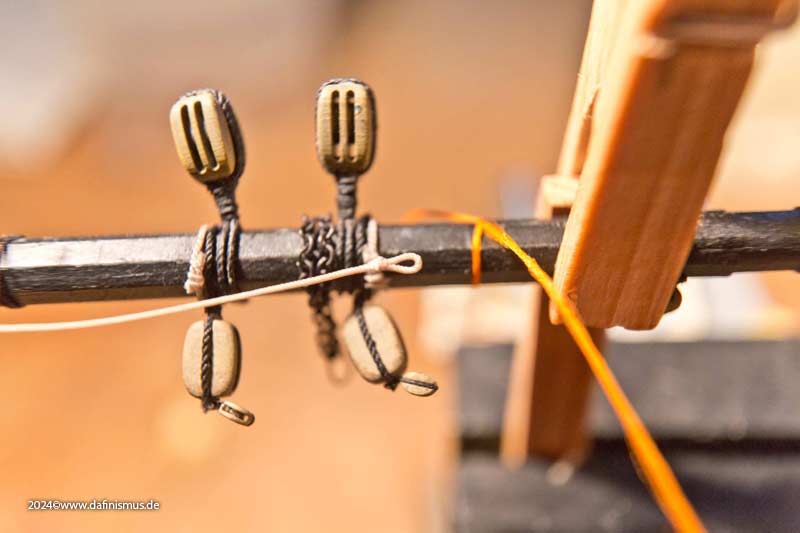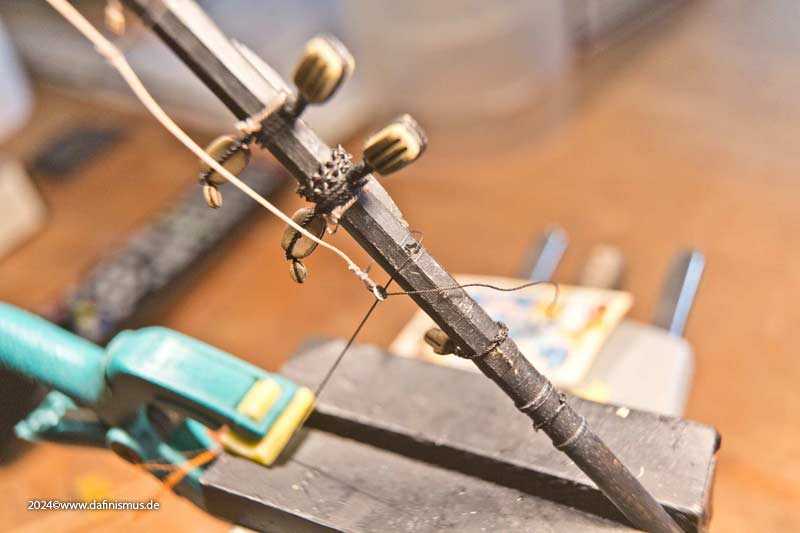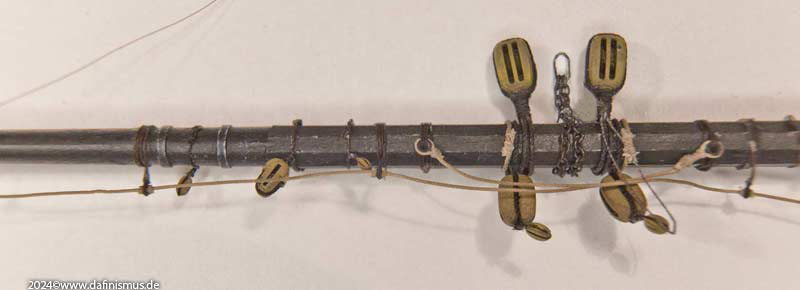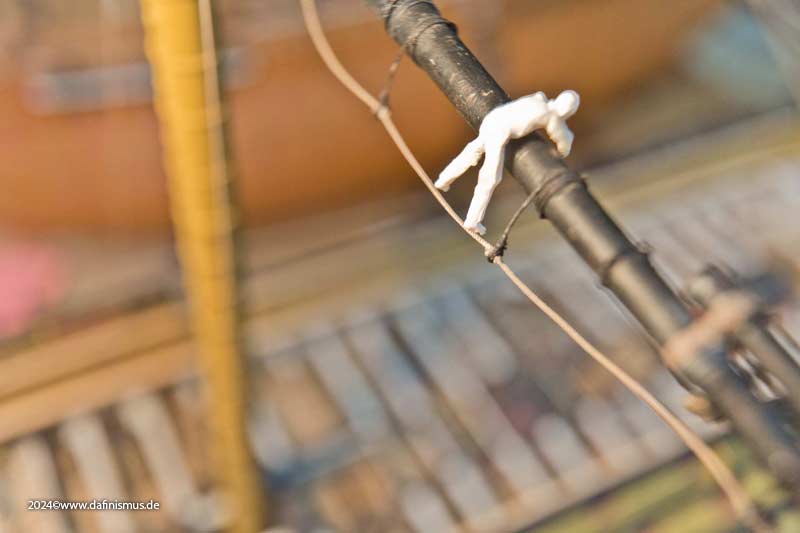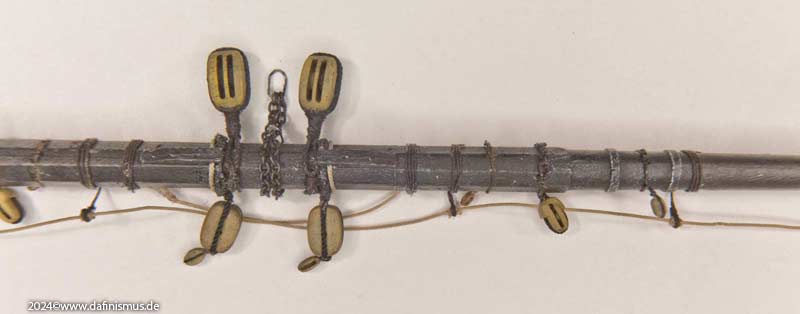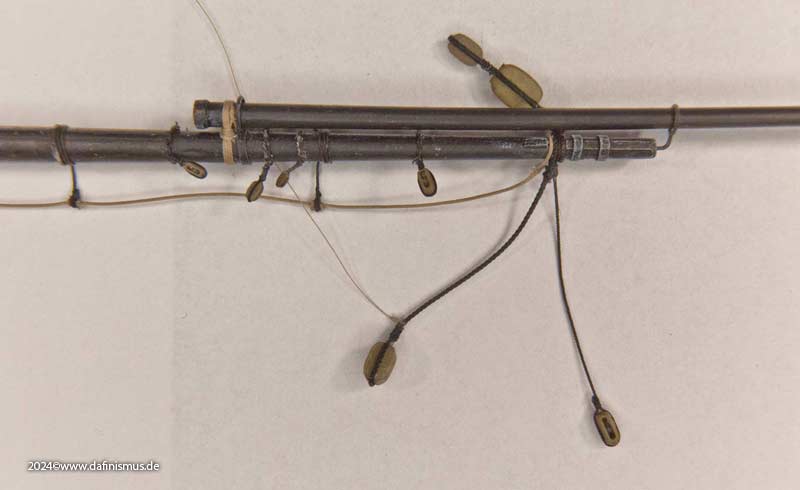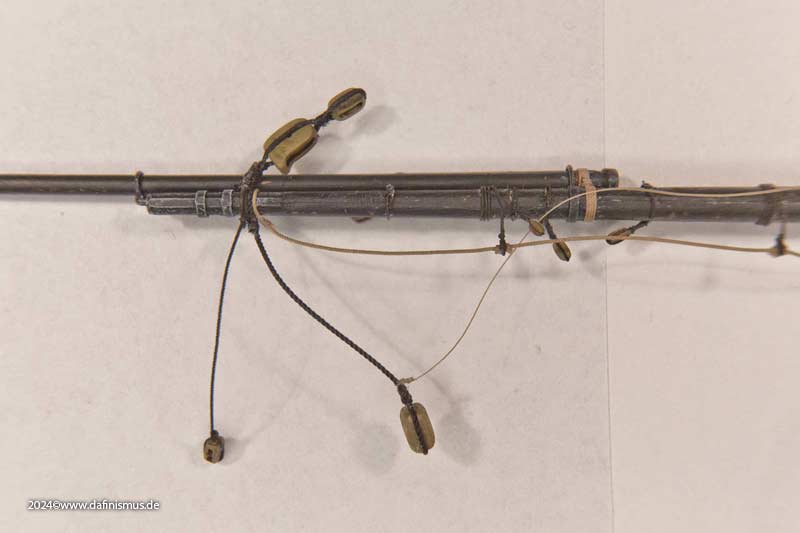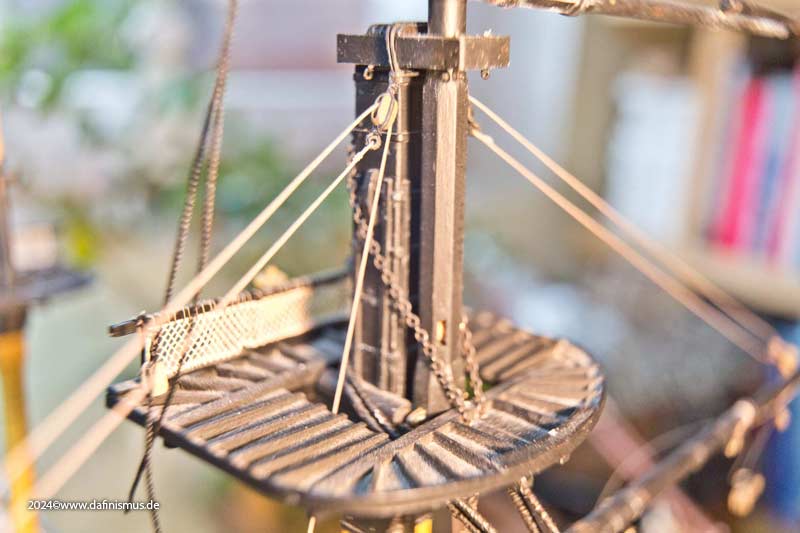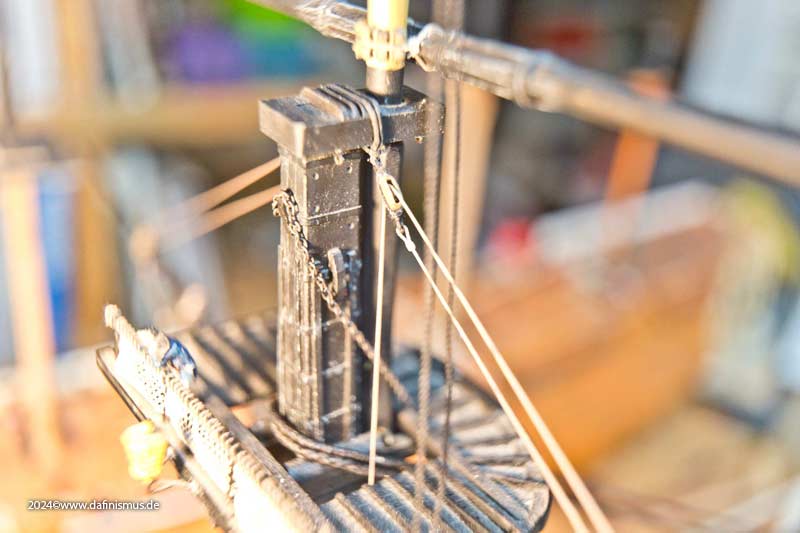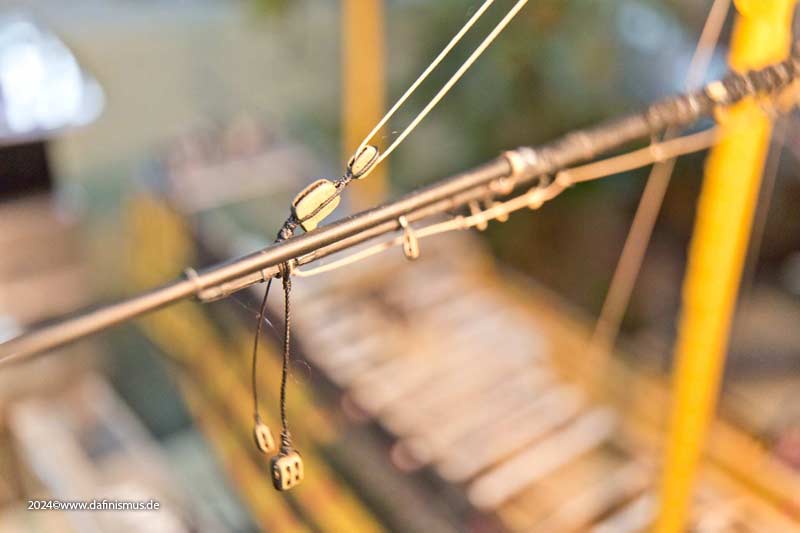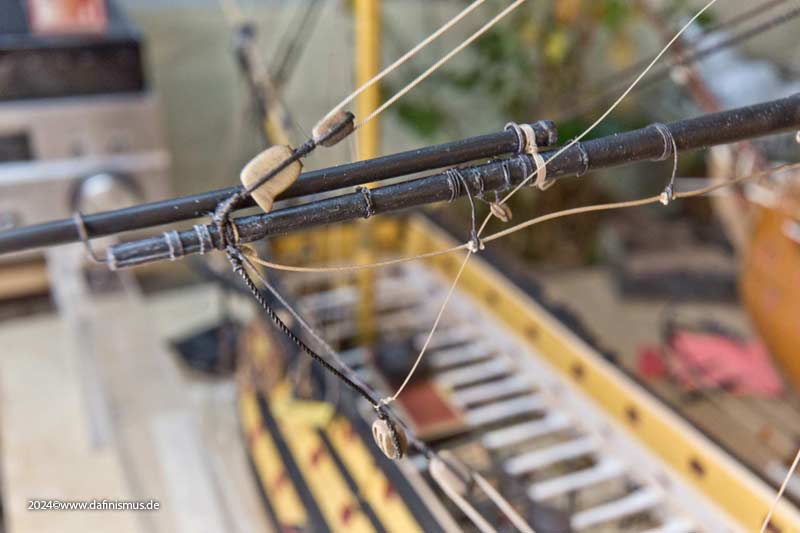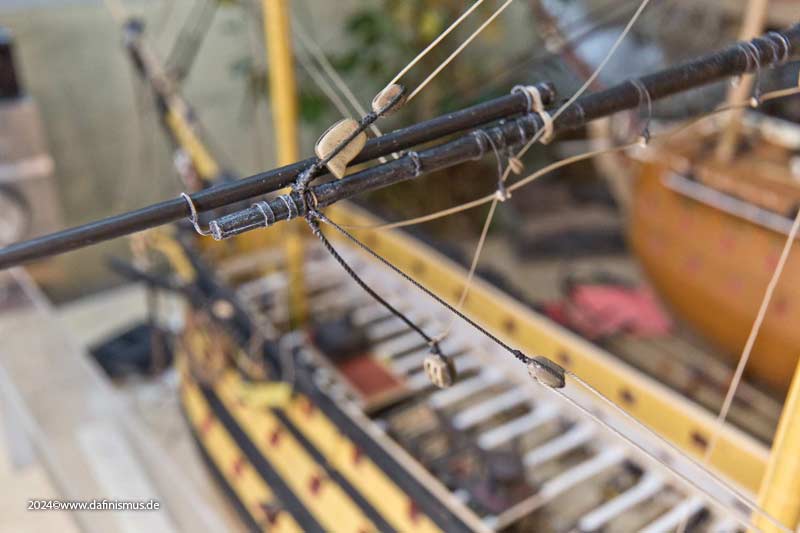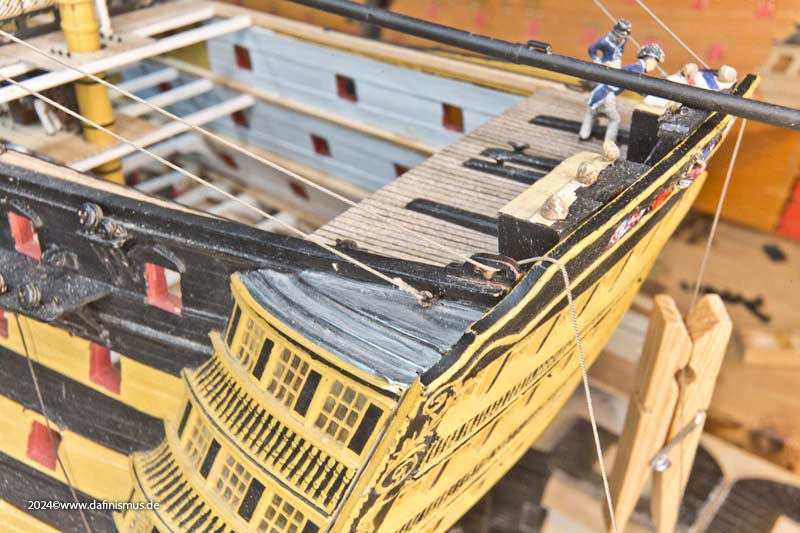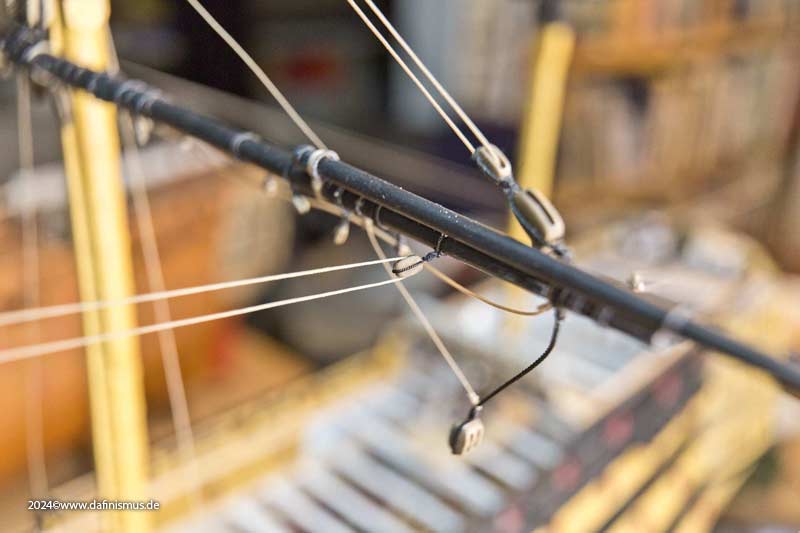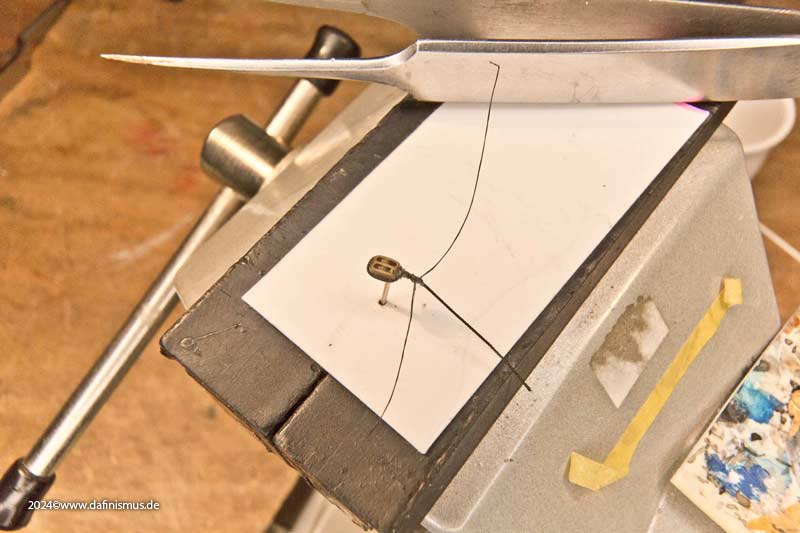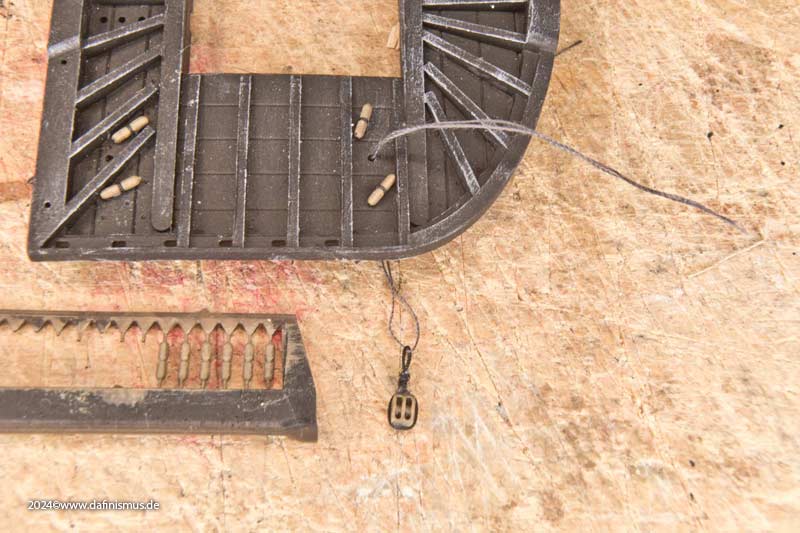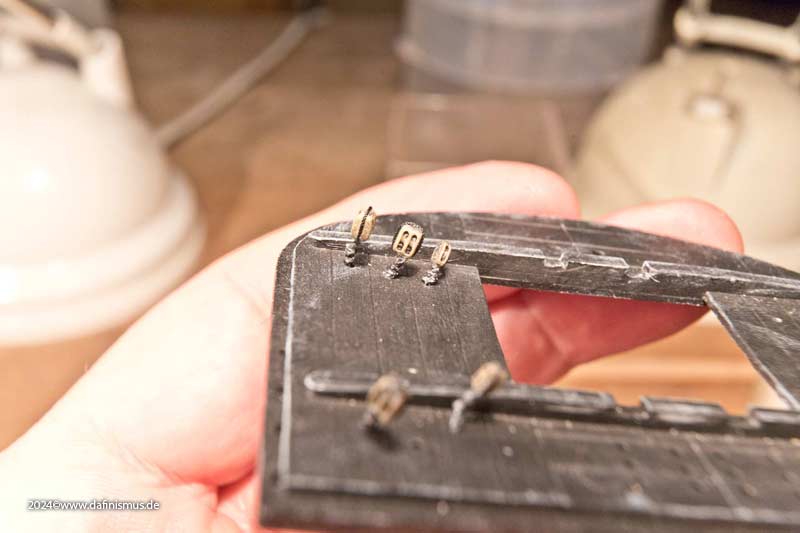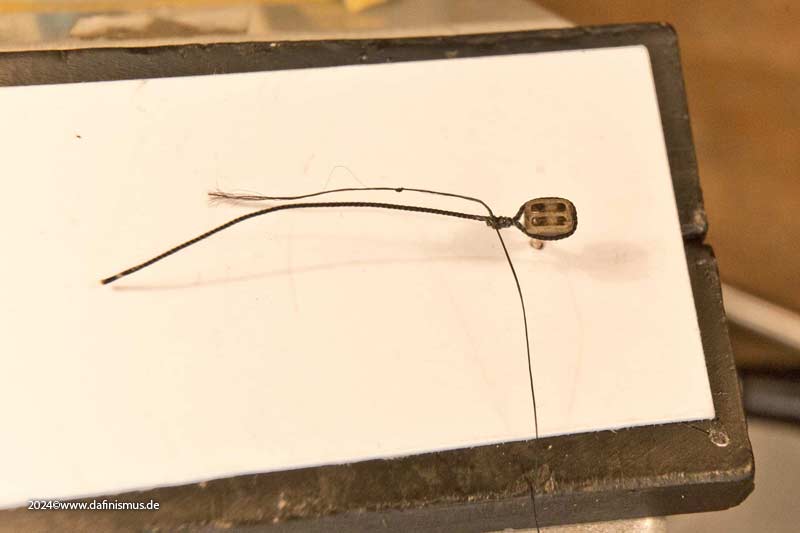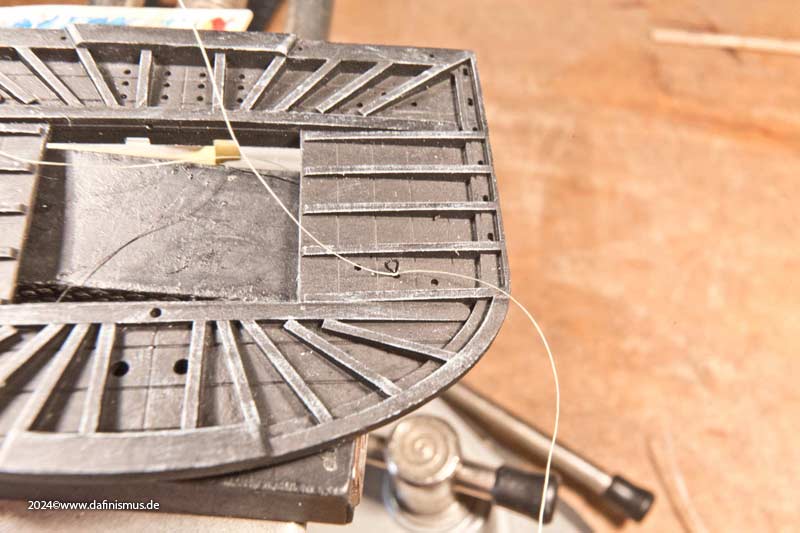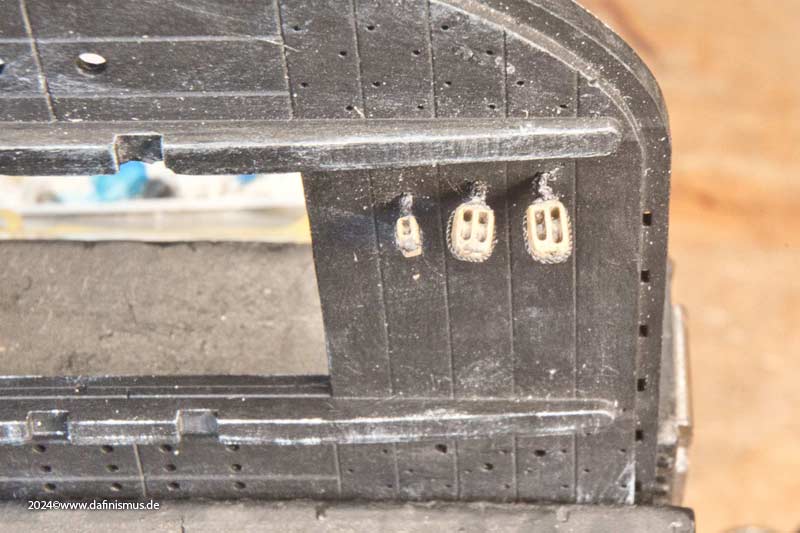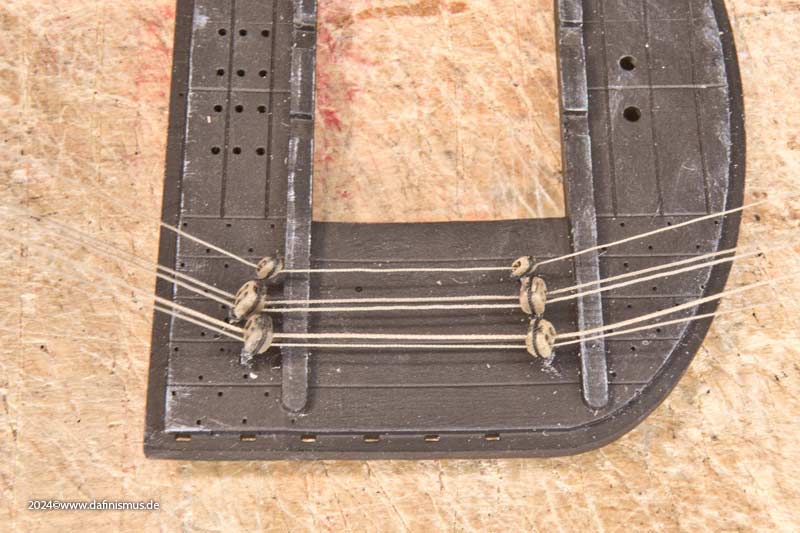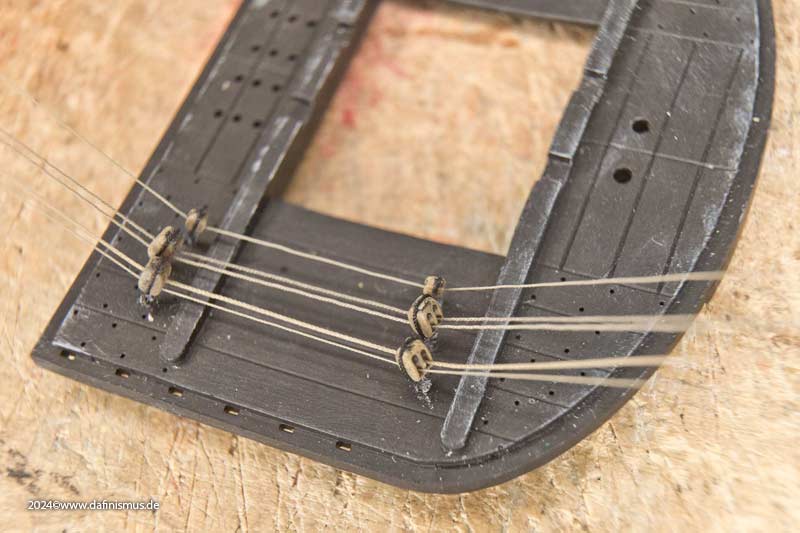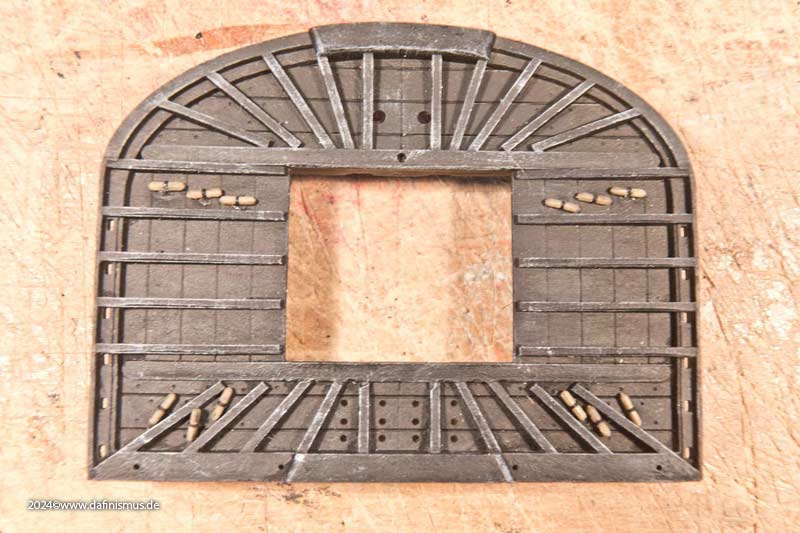- Joined
- Mar 18, 2021
- Messages
- 220
- Points
- 253

Yes, dafi knows how to do it, dafi hasn't forgotten anything ...
...
...
... the wrecking ball!
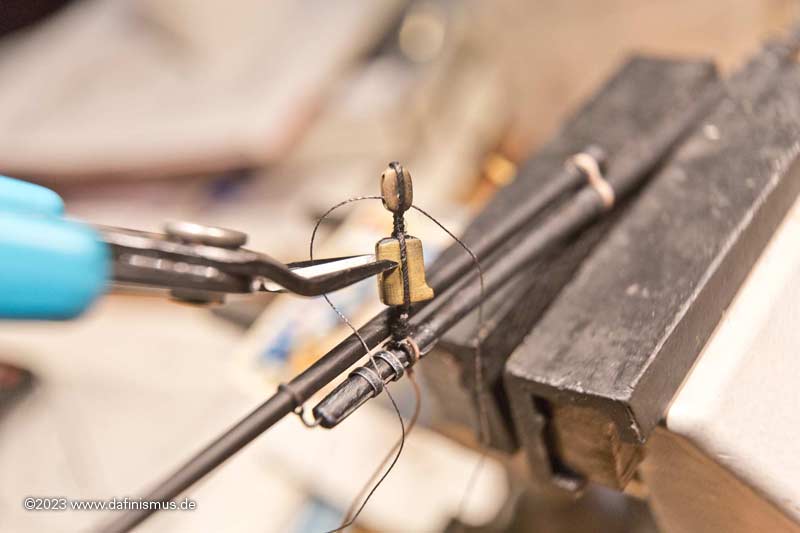
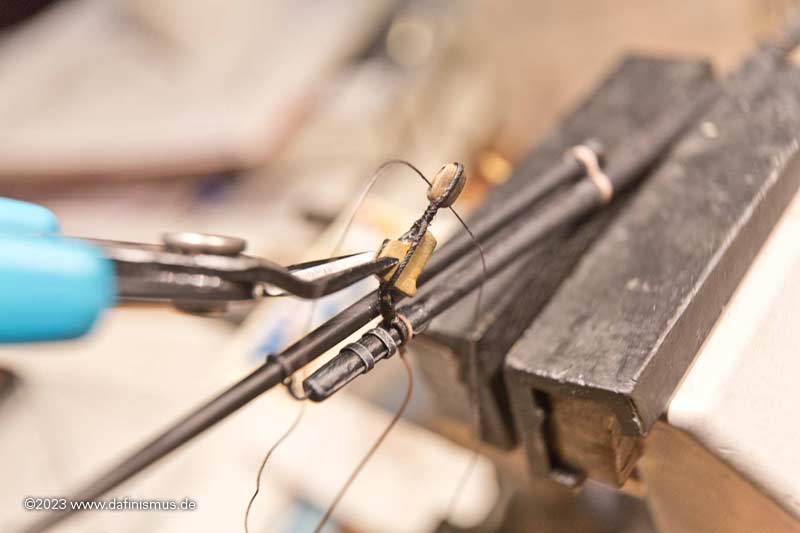
What happened again?
I always say it, my biggest problem is getting the big exhibit in P. out of my head.
For almost 20 years now, I've been looking forward to those great special shoulder and quarter blocks that I discovered back then back there, building them exactly according to McKay and Bugler's plans and, in my exuberance, not even realizing that they are much rounder in the classic literature ...
Thank goodness there are some people in my german and english packs who are not so obsessed and have a keen eagle eye and have pointed this out to me. Thank you!
So I made new rounder blocks. I also finally did some research, as I was slightly irritated at the first pass when I noticed that these blocks on the foremast lower mast and topsail are all the same size, just like on the main mast lower mast and topsail. Thanks to druxey from the MSW for reassuring me and confirming this on the basis of Steel's information.
At this point, in response to a few questions, I would like to repeat the painting method: first, using an old disheveled brush, two layers of very thin paint in a darker brown, which is the base color. The thin paint makes it easy to get to the sides without pasting over the holes.
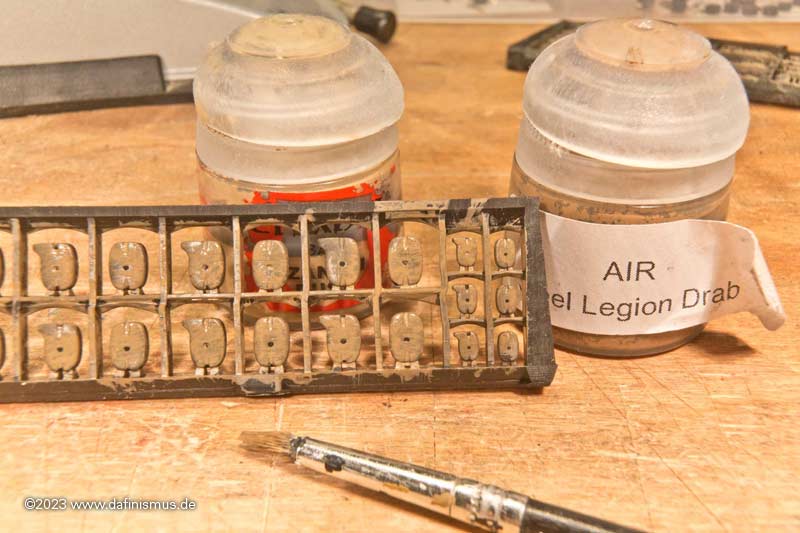
The highlighting color in a lighter brown, applied with a dry brush, is applied on top. This emphasizes the edges and the depths remain slightly darker, which gives optical depth. And the deliberately uneven application of color keeps the whole thing alive and no longer looks like plastic.
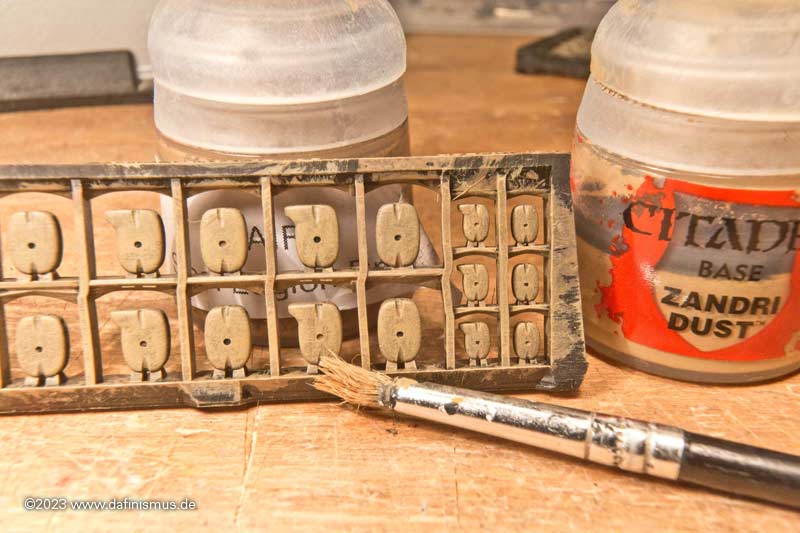
Then the grand finale: as the new round blocks are the same size as the old square ones, simply press the new ones back into the strop from the side and you're done.
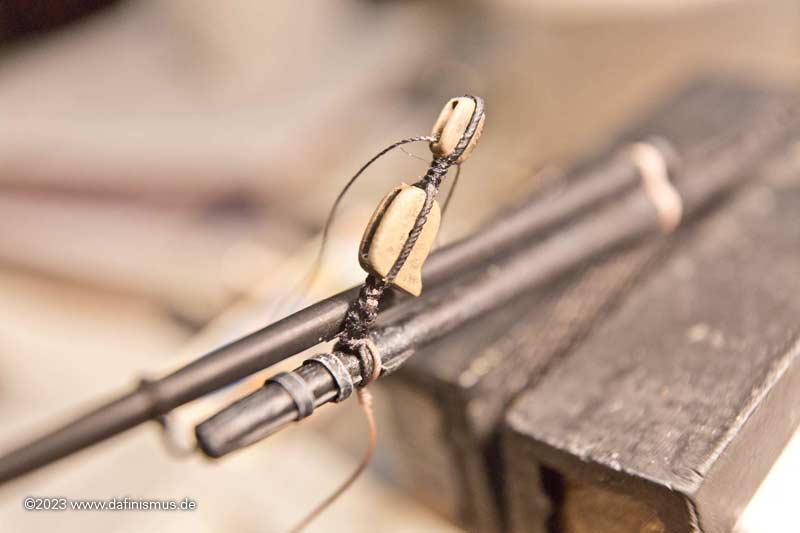
The same with the sheet quarter blocks, before - after
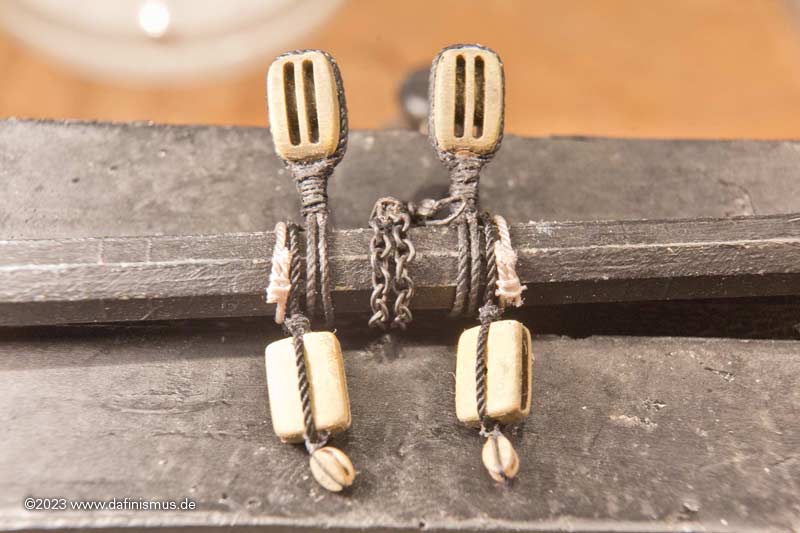
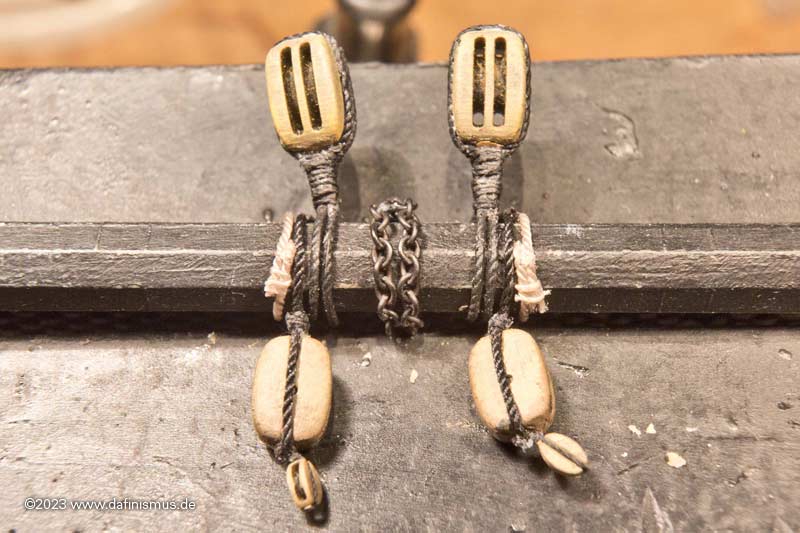
You see dafi still can do it ;-)
XXXDAn
PS: All those of you that already got a delivery of blocks will get a free upgade of the blocks in question
...
...
... the wrecking ball!


What happened again?
I always say it, my biggest problem is getting the big exhibit in P. out of my head.
For almost 20 years now, I've been looking forward to those great special shoulder and quarter blocks that I discovered back then back there, building them exactly according to McKay and Bugler's plans and, in my exuberance, not even realizing that they are much rounder in the classic literature ...
Thank goodness there are some people in my german and english packs who are not so obsessed and have a keen eagle eye and have pointed this out to me. Thank you!
So I made new rounder blocks. I also finally did some research, as I was slightly irritated at the first pass when I noticed that these blocks on the foremast lower mast and topsail are all the same size, just like on the main mast lower mast and topsail. Thanks to druxey from the MSW for reassuring me and confirming this on the basis of Steel's information.
At this point, in response to a few questions, I would like to repeat the painting method: first, using an old disheveled brush, two layers of very thin paint in a darker brown, which is the base color. The thin paint makes it easy to get to the sides without pasting over the holes.

The highlighting color in a lighter brown, applied with a dry brush, is applied on top. This emphasizes the edges and the depths remain slightly darker, which gives optical depth. And the deliberately uneven application of color keeps the whole thing alive and no longer looks like plastic.

Then the grand finale: as the new round blocks are the same size as the old square ones, simply press the new ones back into the strop from the side and you're done.

The same with the sheet quarter blocks, before - after

You see dafi still can do it ;-)
XXXDAn
PS: All those of you that already got a delivery of blocks will get a free upgade of the blocks in question




